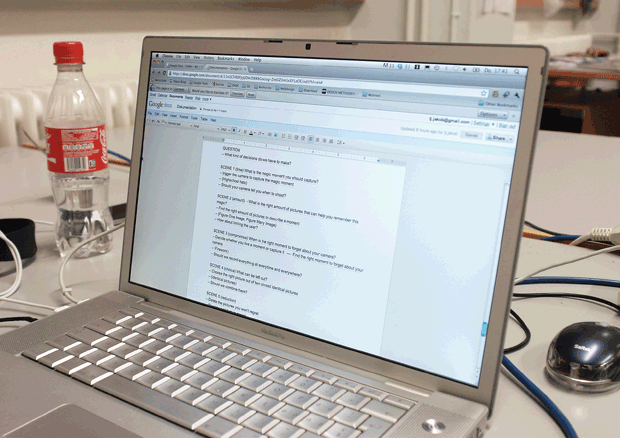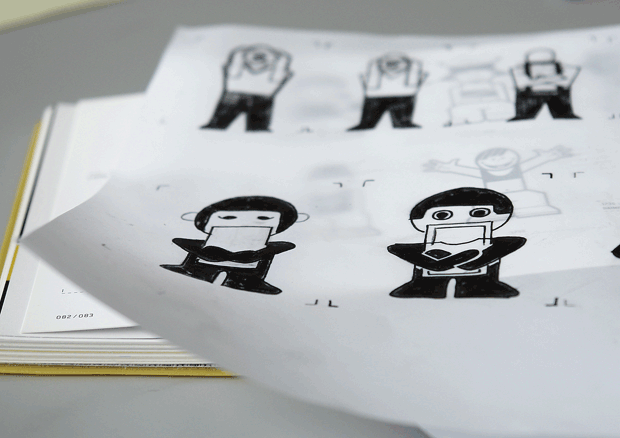Concept (cuma360) | Deliverable
––––––––––––––––––––––––––––––––––––––––––––––––––––––––––––––––––––––––––––––––––––––––
Concept (cuma360) | Work process
The Beginning
At the beginning of our BA-project, we listed four tags on a sheet of paper. Health, respect, trust and smartphone. We choosed them because they’re very open and interesting tags. Each tag, we described with the general context of his environment. We then compared this tag descriptions with each other, looking for connections. While we were working a fifth exciting tag came up. Digital garbage. In digital garbage we mean digital data, such as film, photos, music and programs on hard drives that are not needed. Like the other four tags, we also described the digital garbage, looking for connections. The only interesting connection was to the notion respect. This compound was fascinated us and we decided to limit our subject in this direction.
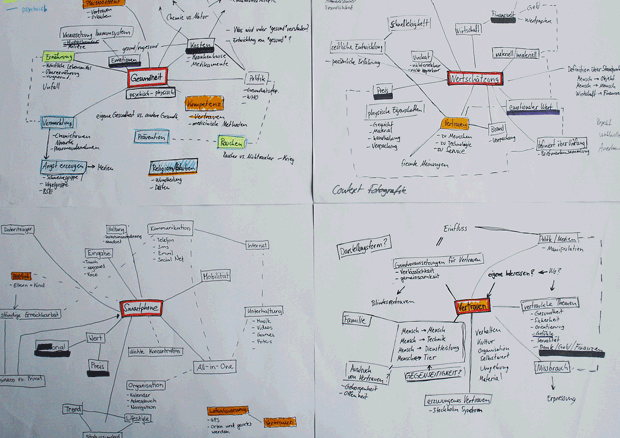
Brainstorming
During the brainstorming session, we wrote our ideas and thoughts on digital garbage down. We wondered whether the easy propagation and renewal of digital data also has an effect on our appreciation in real life. We imagined, where and under what circumstances we produce digital garbage and how we can prevent it. When evaluating the brainstorming we came to the conclusion that most thoughts were about the photography. That was the point at which we narrowed down our subject further to garbage in thedigital photography and the impact on the reputation of a photo.

The Moodboard
During the brainstorming, we made a moodboard to get a feeling about our topic. We posted everything which came us to mind about our topic on the wall. This wall inspired and helped us several times in our process of finding an idea.
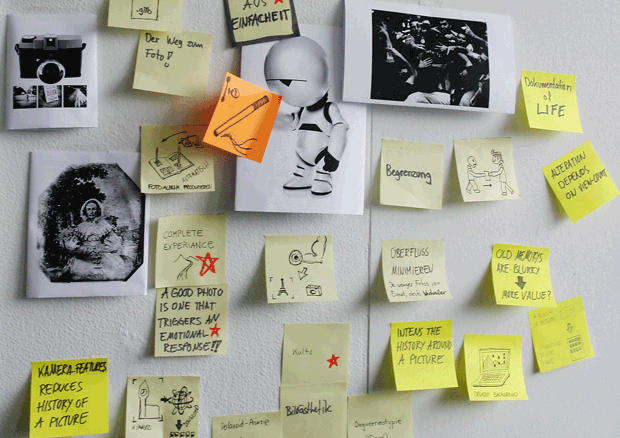
Definition of personal value
To make the difference between a valuable and less valuable photo, we had to know how to define a valuable photo. We discussed our topic with people in our environment in order to see if our topic is also relevant for other people. From this rough survey, we found that the value of a photo can be defined in four areas. These are the materiality, the uniqueness, the emotional connection and the network connected to a photo (e.g. photo communities on the web).
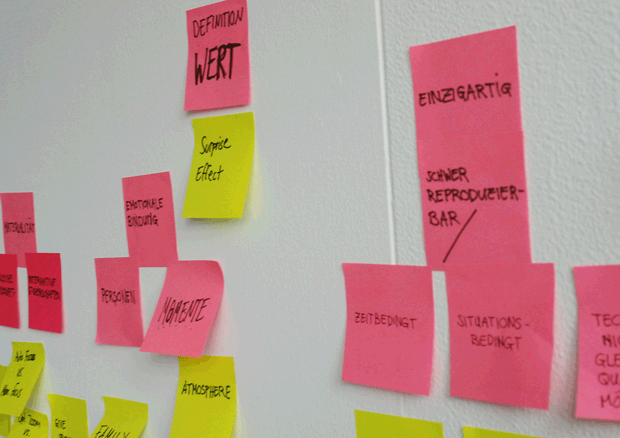

The process of photographing
Once we had defined the term of value, our next question was, where the value is created in a photo. For this purpose we divided the entire photo process from taking a picture to archiving it into individual steps. Soon it became clear to us that we can’t just pick a single step out of the process. We have to consider the whole process to get a new experience. In discussions with our teachers and the class we were made aware that we thought to general. The term "value" is perceived very individual and is hard to grasp. An other point we thought about to general was that there are many different types and uses of photography.
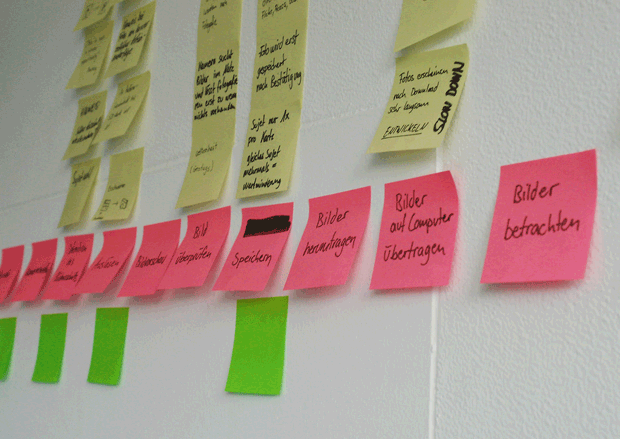
The User Group
Through our first researches, our interest in digital garbage and our own experience we see the greatest potential in the private user who photographes himself and his environment to documented his life. This user hasn’t an artistic or commercial claim. He takes photos to document his life.
Rough concept
With our concept, we want to help the user to document his life. The process of documenting a life with photography consists many steps where several decisions must be made. These decisions can determine the value of an image and affect subsequent steps. At this point, we want to support the user by trying to summarize, simplify or remove some decisions.
The justification of our approach lies in the fact that today the improvement of the technical components of a camera are no significant improvements in quality. We therefore want to think in a new direction.
